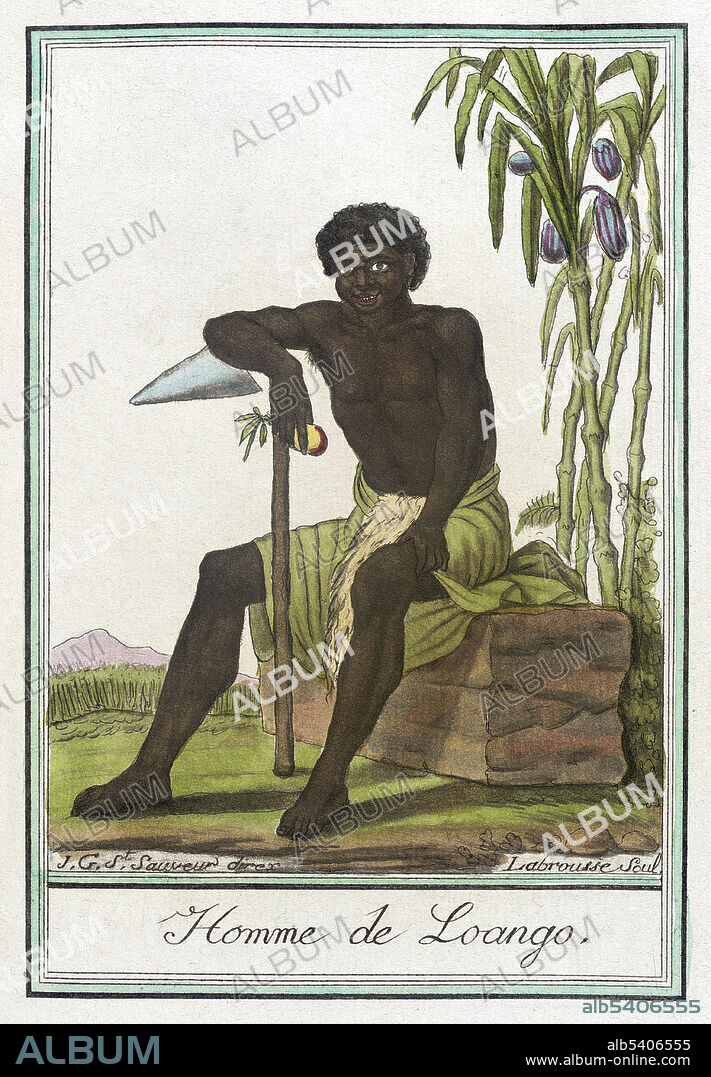alb5406555
Central Africa, Loango Man,1797

|
Add to another lightbox |
|
Add to another lightbox |



Buy this image.
Select the use:

Title:
Central Africa, Loango Man,1797
Caption:
Homme de Loango. Loango Man. The Kingdom of Loango was a pre-colonial African state, during approximately the 16th to 19th centuries in what is now the western part of the Republic of the Congo and Cabinda. Situated to the north of the more powerful Kingdom of Kongo, at its height in the 17th century Loango influence extended from Cape St Catherine in the north to almost the mouth of the Congo River. Loango exported copper to the European market, and was a major producer and exporter of cloth. A rule of succession was in place around 1600, in which the king gave command over four provinces to members of his family, called the provinces of Kaye, Boke, Selage, and Kabango, and the king was to be chosen from a rotation between them. When the king died the ruler of Kaye took over, and if the rule was followed then the ruler of Boke took his place; the other two provincial rulers advanced as well. Costumes of Different Countries, hand-tinted engraving by Labrousse, published by Jacques Grasset de Saint-Sauveur, 1797.
Credit:
Album / Science Source / Los Angeles County Museum
Releases:
Model: No - Property: No
Rights questions?
Rights questions?
Image size:
3334 x 4800 px | 45.8 MB
Print size:
28.2 x 40.6 cm | 11.1 x 16.0 in (300 dpi)
Keywords:
1797 • 18TH CENTURY • 18TH CENTURY, THE • 18TH CENTURY. • 18TH • AFRICA • AFRICAN CONTINENT • AFRICAN • CENTRAL AFRICA • CLOTHING • COLONIAL AFRICA • COSTUME • HISTORY • JACQUES GRASSET DE SAINT-SAUVEUR • KINGDOM OF LOANGO • LABROUSSE • LOANGO • NATIVE AFRICAN • NATIVE DRESS • TRADITIONAL • TRIBE • XVIII CENTURY
 Pinterest
Pinterest Twitter
Twitter Facebook
Facebook Copy link
Copy link Email
Email
